The Volokh Conspiracy
Mostly law professors | Sometimes contrarian | Often libertarian | Always independent
Lawyers: Happier but More Prone to Alcohol Abuse Than We Thought?
The National Health Interview Survey finds that lawyers are less likely to exhibit mental illness than the general population but are more likely to abuse alcohol than similarly educated peers. [UPDATE: This is Yair Listokin & Ray Noonan's post, but I inadvertently failed to include their bylines at first -- sorry about that.]
In our last post, we explained how previous ad hoc studies of lawyer mental health are flawed and how the National Health Interview Survey (NHIS), the "trusted gold standard" of public health data, measures prevalence of mental illness and substance abuse more accurately. In this post and our article, we explore what the NHIS sample tells us about lawyers' mental health and alcohol abuse.
Mental Health
The NHIS measures mental health with the Kessler 6 screening scale (K6). The K6 score has been extensively validated as a reliable indicator of acute mental illness. Participants are asked six questions about their mental health, and their responses to each question are given a value from zero to four and then summed. A total K6 score equal to or above five indicates that the respondent is suffering from moderate or serious mental illness, while a K6 score equal to or above 13 indicates serious mental illness. Here, "serious mental illness" means meeting the criteria for a DSM-IV disorder (other than a substance use disorder) within the last year and suffering serious impairment (defined using the Global Assessment of Functioning scale). Those with moderate mental illness do not meet the criteria for a DSM-IV disorder but report other worrisome characteristics, such as life impairment and increased visits to a mental health care professional.
A cursory look at the NHIS sample shows that lawyers reported much lower incidences of mental illness, both moderate and serious, than the entire sample. Although 3.7 percent of the entire sample reported serious mental illness, only 0.7 percent of lawyers did so. Similarly, 12.8 percent of the entire sample reported moderate or serious mental illness, compared to 6.4 percent for lawyers. These differences are statistically significant. Further, reported mental illness among lawyers was no worse than that of medical professionals.
Figure 1. Serious mental illness among population with BA or less, medical professionals, and lawyers.
Notes: With 95 percent confidence intervals.
Figure 2. Moderate or serious mental illness among population with BA or less, medical professionals, and lawyers.
Notes: With 95 percent confidence intervals.
Other studies, including the one relied upon by the ABA National Task Force on Lawyer Well Being, "found that younger lawyers in the first ten years of practice and those working in private firms experience the highest rates of . . . depression." The NHIS data suggest otherwise: differences in mental illness between lawyers younger than 40 and their older peers were not significant, nor were differences between lawyers working in private firms and those working in-house or for the government.
Many have argued that lawyers in large law firms are particularly prone to mental illness. To probe this hypothesis, we broke down incidences of mental illness among lawyers working at law firms of different sizes. We defined small firms as having fewer than 10 employees, mid-size firms as having between 10 and 99 employees, large firms having between 100 and 499 employees, and very-large firms having 500 or more employees. Lawyers at large or very-large firms reported a lower incidence of serious mental illness than their counterparts at smaller firms, significant at the 0.1 percent level. Differences in rates of moderate or serious illness were not significant. That said, at this level of granularity, sample sizes become so small that the results should be taken with a grain of salt. For example, no lawyers in the NHIS sample at large or very large firms reported K6 scores indicating serious mental illness.
Figure 3. Lawyers with serious mental illness by firm size
Notes: With 95 percent confidence intervals.
Figure 4. Lawyers with moderate or serious mental illness by firm size
Notes: With 95 percent confidence intervals.
Relying on surveys of volunteer respondents with low response rates renders any analysis of time-trends in lawyer well-being tenuous. If we compare very different surveys conducted in different years, then any observed trends may be attributed to genuine trends or to differences in survey methodology or response rates. It is therefore not surprising that longitudinal analysis of lawyer well-being is exceedingly rare. Relying on the NHIS data to study lawyer well-being, by contrast, allows us to study trends over time because the NHIS uses a common survey methodology over many years. Looking over time suggests that incidence of serious mental illness among lawyers declined slightly from 2004 to 2017, while the incidence of moderate or serious mental illness stayed relatively constant.
Figure 5. Fraction with serious mental illness over time
Notes: Three year moving averages, 2004-2017.
Figure 6. Fraction with moderate or serious mental illness over time
Notes: Three year moving averages, 2004-2017.
The NHIS data suggests that lawyers' mental health is actually better than the general population's, and no worse than that of medical professionals.
Alcohol Abuse
Problematic drinking data among lawyers presents a grimmer picture. Using a Center for Disease Control definition of excessive alcohol consumption—drinking five or more drinks on twelve or more days a year—reveals rampant alcohol abuse among lawyers in the NHIS sample compared to similarly educated professionals. Eleven percent of lawyers reported excessive alcohol consumption. Although only slightly higher than the overall NHIS population incidence, this figure is more than twice as much as the excess alcohol fraction reported by other similarly educated professionals such as doctors and dentists. This difference is significant at the 99% level.
Figure 7. Fraction Consuming Excess Alcohol
Notes: Three year moving averages, 2004-2017.
Demographic and firm data provide additional nuance. We found that lawyers at large (100-499 employee) and very large (500+ employee) firms reported much higher rates of problematic drinking than other lawyers, although the difference is not statistically significant at the 5% level due to small sample sizes. Further, male lawyers reported problematic drinking at 1.5 times the rate of their female counterparts, a difference significant at the 5 percent level.
Figure 8. Fraction of lawyers consuming excess alcohol by firm size
Notes: With 95 percent confidence intervals.
Figure 9. Population consuming excess alcohol by gender
Notes: With 95 percent confidence intervals.
Although lawyers consume excess amounts of alcohol at much greater rates than similarly educated non-lawyers, the rate reported in the NHIS (11%) falls far short of the rates derived from the ABA/Hazelden survey, which "found that between 21 and 36 percent [of lawyers] qualify as problem drinkers." That said, this may reflect the different instruments used to observe problematic drinking. The ABA/Hazelden survey used the Alcohol Use Disorders Identification Test, "a 10-item self-report instrument developed by the World Health Organization to screen for hazardous use, harmful use, and the potential for alcohol dependence."
Time trends in lawyer alcohol abuse are similarly concerning. Problematic drinking rates among lawyers in the sample increased considerably from 2004 to 2017. By contrast, problematic drinking rates for other educational and professional categories show milder increases. Doctors, dentists, and veterinarians, for example, report a relatively steady problematic drinking rate throughout the period. The dramatic increase in problematic drinking rates for lawyers during this period thus represents a potentially troubling development that is particular to law, although standard errors remain high due to relatively small sample sizes. Identifying this previously unstudied trend is an excellent example of the possibilities unlocked by using annually repeated surveys such as the NHIS to study lawyer well-being in place of more ad hoc studies, even if those studies have larger sample sizes.
Figure 10. Fraction of population with excessive drinking over time
Notes: Three year moving averages, 2004-2017.
Overall, then, alcohol abuse appears to be a particular problem for lawyers, and one that has recently grown much worse. Reformers should evaluate the role of drinking within legal culture and consider ideas for reducing alcohol's role.
Even though lawyers do not report extraordinary levels of mental illness, mental health should remain a priority for the legal profession alongside limiting substance abuse. However methodologically sound and reliable, the NHIS offers a single source of data on lawyer mental illness with only nine hundred seventy-eight lawyer-observations. Moreover, the high rates of alcohol abuse reported by lawyers may indicate underlying mental health problems in the profession that are not well captured by K6 scores. To build more robust conclusions about mental health in the profession, we would ideally have more sources of data, including a large randomized survey of lawyers with high response rates. For the moment, however, the NHIS data suggests that the conventional wisdom of extraordinary rates of mental illness in the legal profession may be unwarranted.



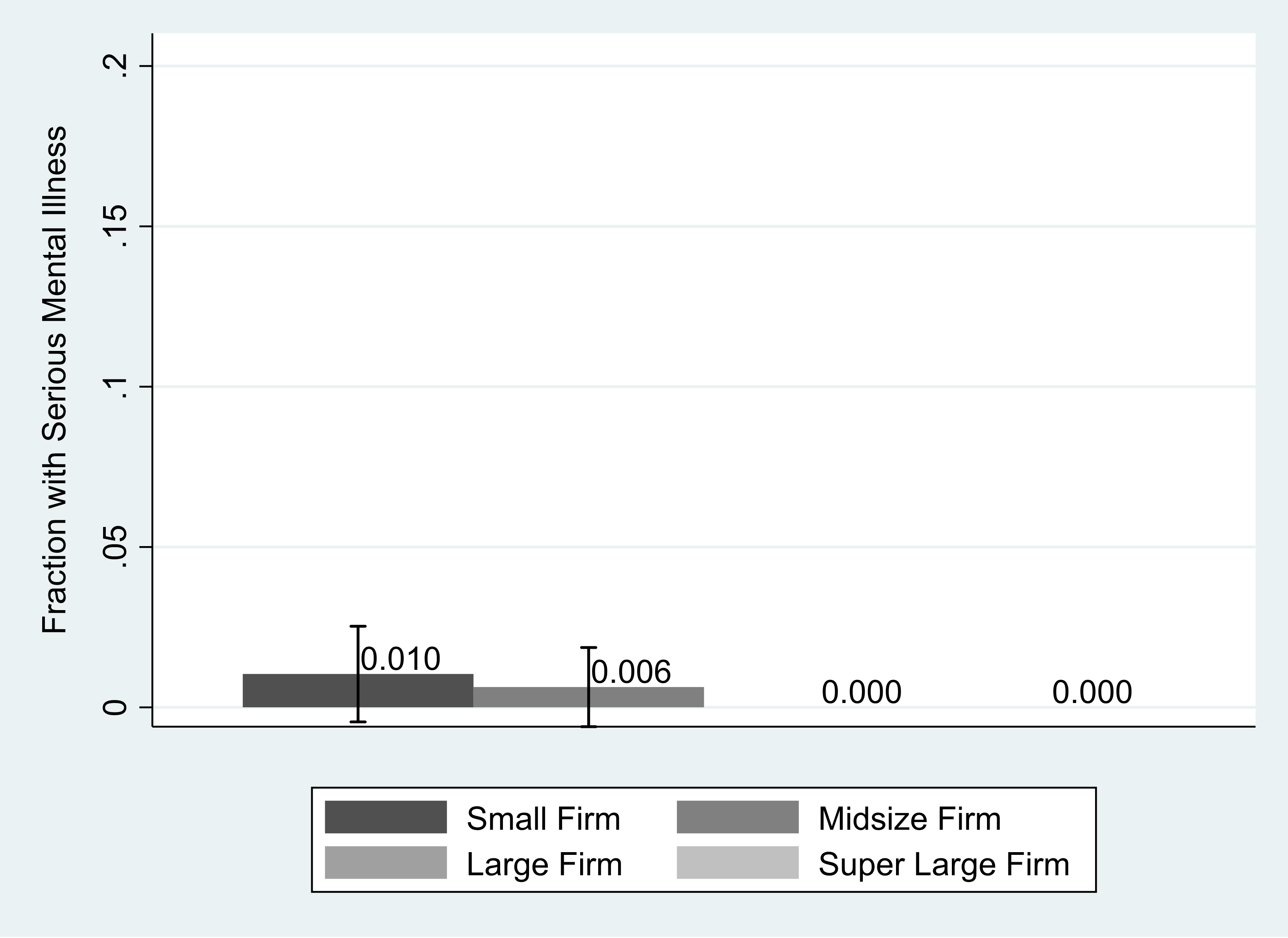

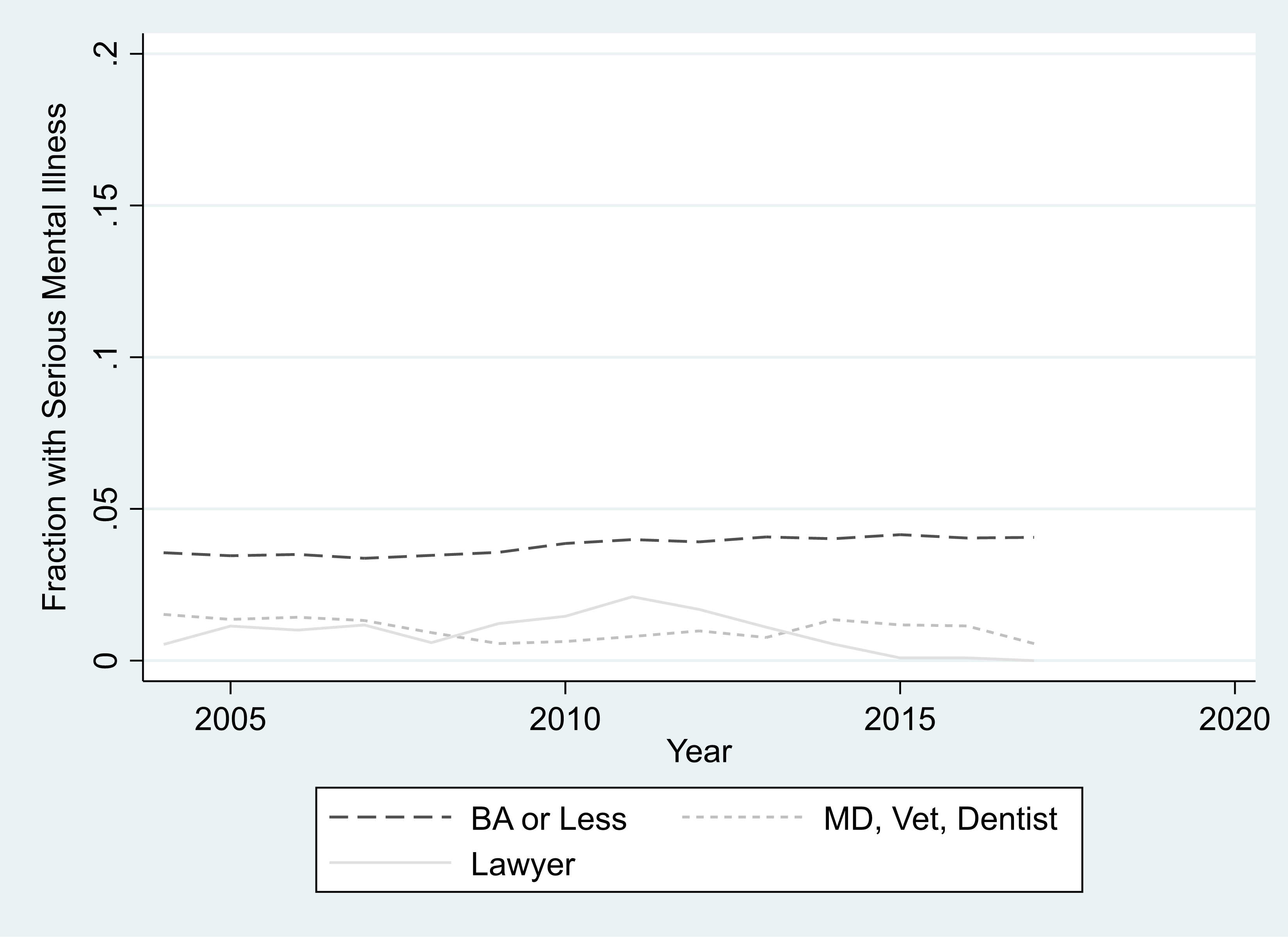
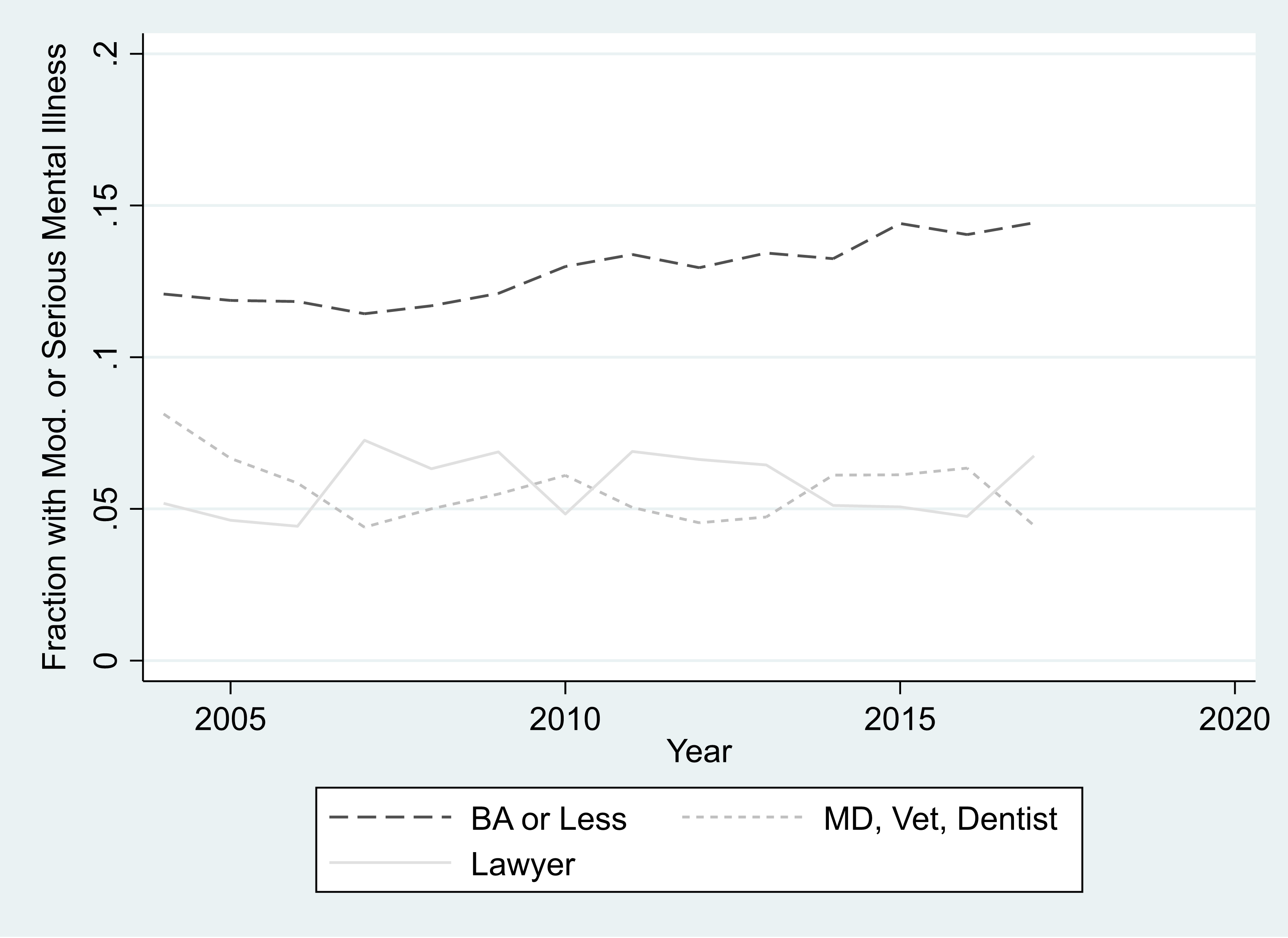
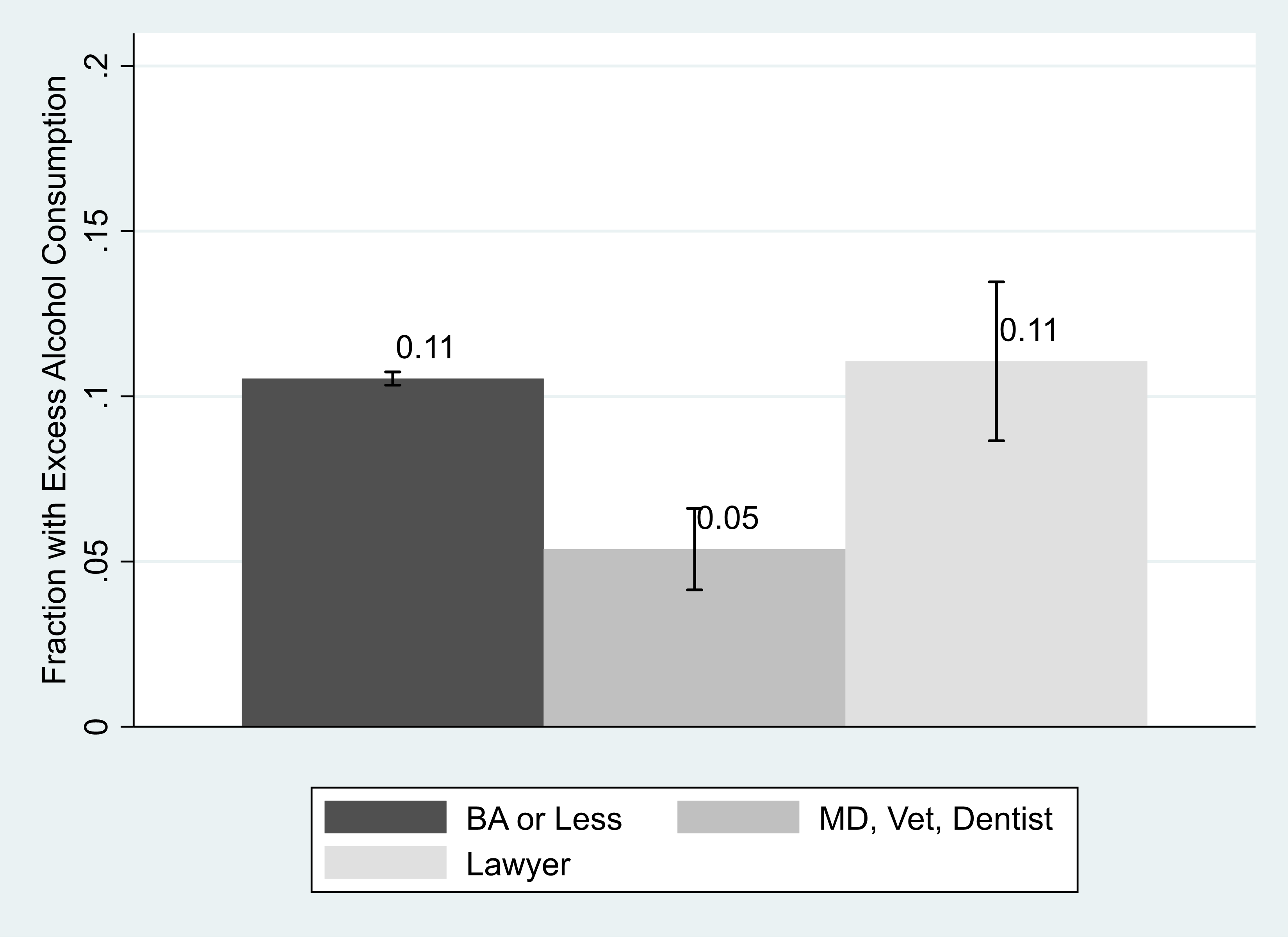

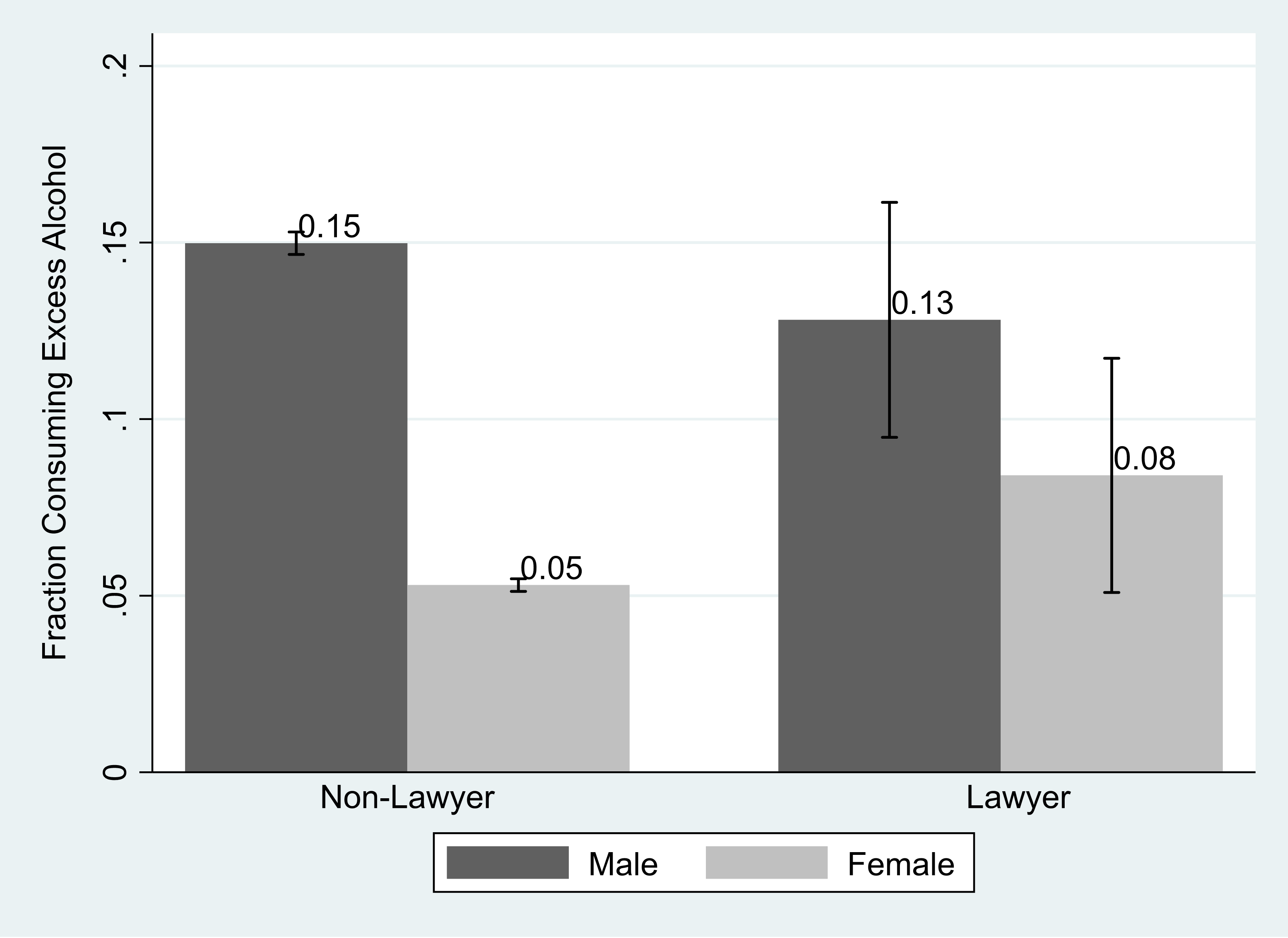



Show Comments (49)